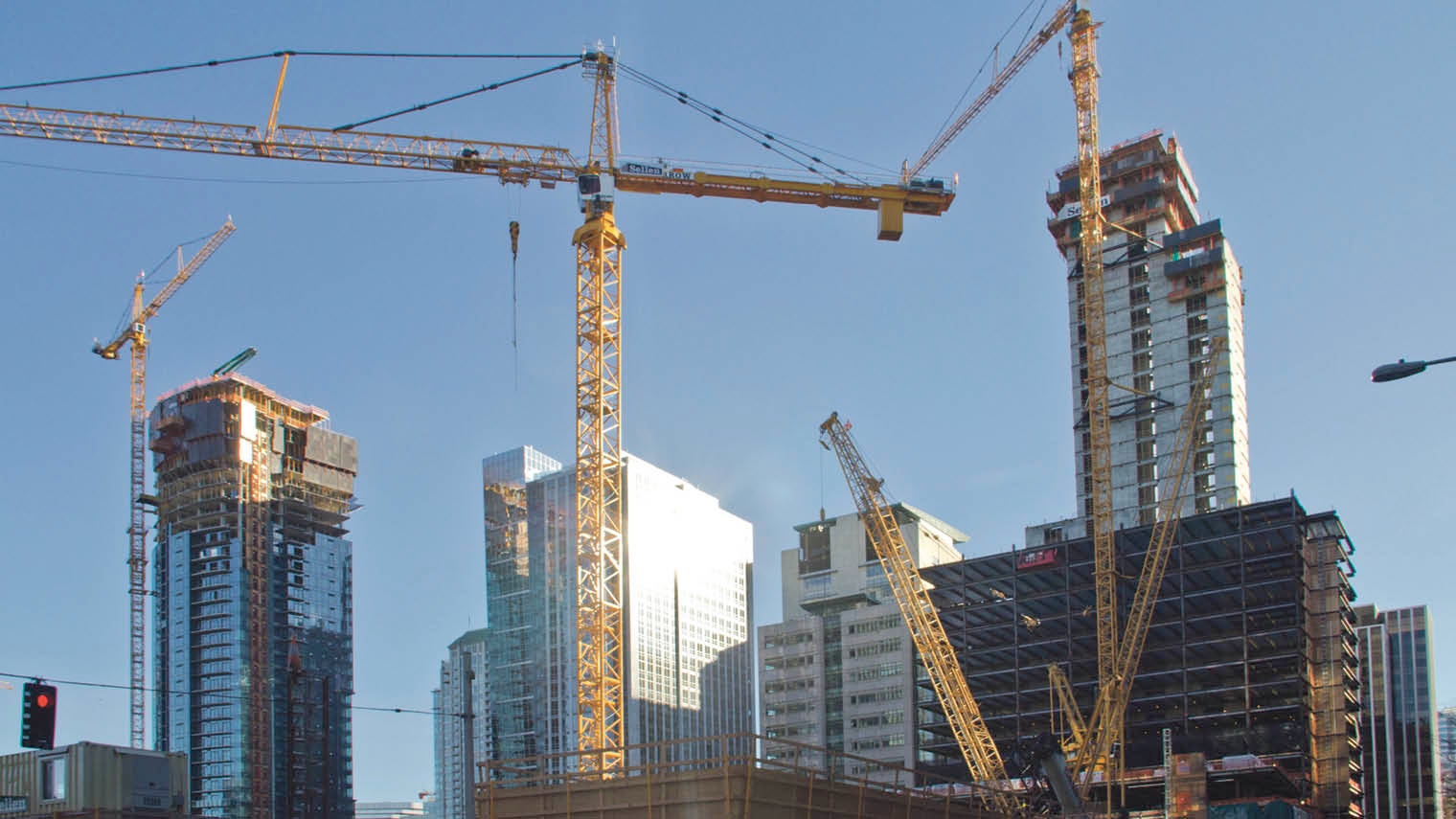Designers and architects crafting the workplaces of tomorrow are finding it increasingly tricky to plan for unknown and potentially disruptive tech advances. So how do you future-proof a modern office, especially if the build spans a number of years by which time some of the technology may be outdated?
“This is a critical question,” says Ken Shuttleworth, founder of London-headquartered Make Architects and, from July 11, president of the British Council for Offices. “Buildings on the drawing board now will have employees working in them that aren’t even born yet, so developers need to think smarter. In 2017 the infrastructure of a building is more important than the structure itself. We need to provide the means to easily upgrade and adapt the building to make it flexible for the future.”
Staying the step ahead
So-called agile building demands “collaboration and engagement with all consultants from the outset to ensure that the flexibility is built into the fabric”, according to Mr Shuttleworth. He continues: “Much like sustainable techniques that improve the environmental performance of a building, for optimal effectiveness the integration of technology can’t be bolted on at a later date. The project team must work with the tenant from the earliest opportunity to understand what their needs are, so as to design solutions into the building.”
British Institute of Interior Design president Susie Rumbold says the use of building information modelling (BIM) and also both augmented and virtual reality is becoming popular to lessen the impact of technological leaps. “BIM creates an accurate model of all building processes in one location, allowing the way the systems will interact to be predicted,” she says. “We now design for the whole life cycle of each building, from construction through operation, and to eventual demolition and disposal.”

Architects and designers are finding it increasingly difficult to plan for unknown, disruptive technology
Every project should have a “digital masterplan”, says Volker Buscher, global digital services leader at Arup, and include key decision points on how digital design is executed on a specific build. “These should correspond to a digital agenda, which defines the aims of the property owner across their entire portfolio,” he says. “Both the digital masterplan and agenda need to feed into an opportunity matrix. This outlines specific benefits, statements and outcomes, and informs a systems design guide that makes clear to all individual design teams their part in delivering the digital aspirations of the portfolio owner.”
Connectivity is essential in the modern workplace and that needs to be a central factor. James Friedenthal, head of corporate development at Workspace, which owns 68 London properties totalling 3.5 million square feet, notes “circuit sizes have grown from 0.1 gigabits in 2006 to 10 gigabits in 2017”. As such, for Mr Buscher, “developers need to think of buildings like massive online stores or ‘Amazons’.”
“Instead of choosing fixed and inflexible systems inside, which don’t speak to each other, they need to move towards having a single open-source technology platform into which all the services plug,” he adds. “This will enable the building to speak to its operators and tenants, and new technologies or applications to be plugged in, making the building incredibly responsive to the changing demands of occupants.
For optimal effectiveness the integration of technology can’t be bolted on at a later date
“Having all information from all services accessible through one source will enable developers or building operators to analyse data from across portfolios in real time or build applications that enable tenants to interact with the services directly.”
Simon Rooks, general manager of integrated solutions at Tyco, a world leader in smart building technology, advises designers to install smart technology that can be easily upgraded and integrated with future iterations, as required. “For example, smart security cameras should be capable of integration with fire detection or access control systems,” he says. “Not only will this open functionality and enable management teams to obtain a better overview of the technology in their office, but it will also make it easier to add or remove systems.
“It’s also key to use technology providers that can integrate with other non-proprietary systems. You shouldn’t need to get locked into buying from company A when change comes along; look for the company B that can integrate its systems seamlessly with new technology when you need it.”
Lee Penson, chief executive of Penson, the architectural firm behind visionary workplaces for rapper Jay-Z, YouTube, Samsung and Google, says that because “technology can make you fly” it is imperative to commit to it. “It will unlock potential and give you freedom,” he says. “Being tied to your desk is so ten years ago; the modern workplace is a no-clutter zone. So the information technology in the office now needs to be stripped back to free up space and movement.
“Humans will always operate in the same ways and live by the same values, by and large, even as new tech comes and goes,” Mr Penson concludes. “If you create a space that is all about humans and life in general, then you’ve already future-proofed your workplace, no matter how long the build takes.”
Staying the step ahead

